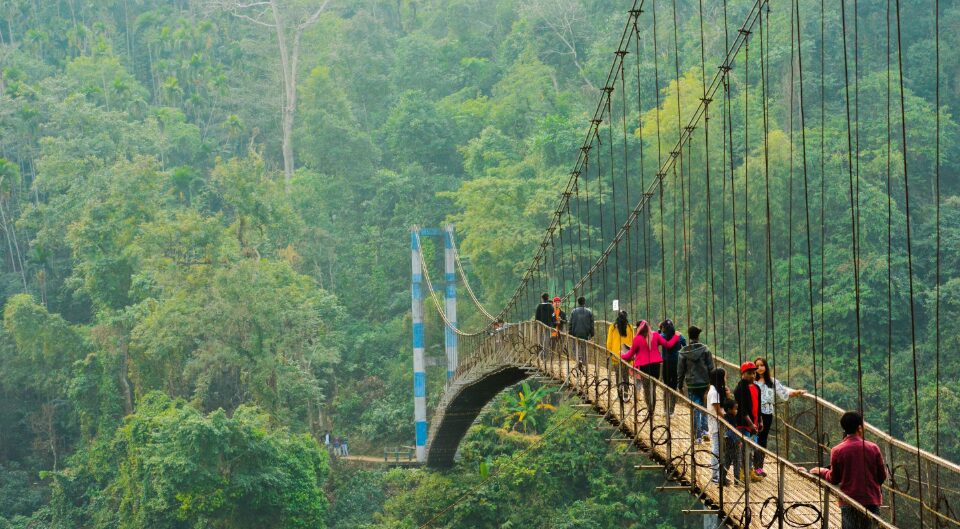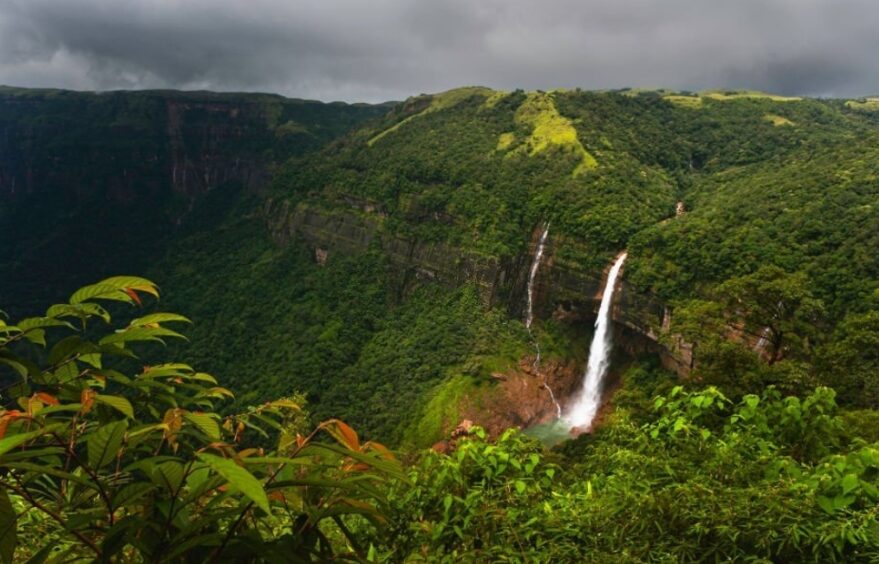Welcome to the enchanting world of Manas National Park in Assam! Nestled on the foothills of the Eastern Himalayas, this biodiverse paradise is a dream come true for nature enthusiasts and adventure seekers alike. With this article, we invite you to embark on a journey through this famous wildlife sanctuary and discover its awe-inspiring beauty and fascinating inhabitants.
Location and significance of Manas National Park
Manas National Park is not just any ordinary park – it is a UNESCO World Heritage Site and a Project Tiger reserve. Spanning over an impressive 950 square kilometers, it is home to an incredible variety of flora and fauna, including the majestic Bengal tiger, the rare golden langur, and the great Indian one-horned rhinoceros. The park’s diverse ecosystem also encompasses grasslands, wetlands, and tropical evergreen forests, making it a haven for nature lovers.
The park is located in the western part of Assam, near the borders of Bhutan and the state of Arunachal Pradesh. It is named after the Manas River, which flows through the park, adding to its scenic beauty. Manas National Park is renowned for its conservation efforts and is considered one of the most important protected areas in the Eastern Himalayas.
Flora and fauna of Manas National Park
The rich biodiversity of Manas National Park is a sight to behold. The park is home to over 55 species of mammals, 380 species of birds, and 50 species of reptiles. The iconic Bengal tiger, known for its grace and power, roams freely within the park’s boundaries. Other notable species include the rare golden langur, a primate found only in this region, and the great Indian one-horned rhinoceros, an endangered species.
The park is also a paradise for birdwatchers, with a wide range of avian species gracing its skies. From the colorful Indian roller to the majestic great hornbill, bird enthusiasts will be captivated by the diversity of feathered creatures that call Manas National Park their home. The park’s rivers and wetlands attract a variety of water birds, making it a haven for birdwatching enthusiasts.
Best time to visit Manas National Park
Manas National Park is open to visitors from November to April, which is considered the best time to visit. During these months, the weather is pleasant, and the park’s wildlife is more active, providing ample opportunities for sightings. The monsoon season, from May to October, brings heavy rainfall, making certain areas of the park inaccessible. It is advisable to avoid visiting during this period.
The winter season, from November to February, is particularly favorable for wildlife sightings, as animals gather near water bodies and are easier to spot. The park’s lush greenery during the spring and summer months, from March to April, also makes for a picturesque setting.
How to reach Manas National Park
Manas National Park can be reached by air, rail, and road. The nearest airport is Guwahati International Airport, which is well-connected to major cities in India. From the airport, one can hire a taxi or take a bus to reach the park, which is approximately a 4-hour drive away.
For those traveling by train, the nearest railway station is Barpeta Road, located about 22 kilometers from the park. From the railway station, taxis and buses are available to reach the park entrance.
If you prefer to travel by road, Manas National Park is well-connected to Guwahati and other major cities in Assam. The park has multiple entry gates, and private taxis and buses can be hired for transportation within the park.
Things to do in Manas National Park
- Jeep Safaris: Embark on thrilling jeep safaris that take you deep into the heart of the park. Experienced guides will accompany you, ensuring a safe and informative journey. Keep your camera ready to capture sightings of the park’s magnificent wildlife, including the elusive Bengal tiger and the playful golden langur.
- Nature Walks: Immerse yourself in the natural beauty of Manas National Park by taking guided nature walks. Traverse through lush forests, cross gushing streams, and listen to the melodies of the resident birds. Learn about the park’s flora and fauna from knowledgeable guides who will unravel the secrets of this enchanting ecosystem.
- River Cruises: Experience the park from a different perspective by taking a river cruise along the Manas River. Witness the mesmerizing sight of elephants bathing by the riverbanks and catch glimpses of the park’s diverse wildlife as they come to quench their thirst. The tranquil surroundings and the gentle sway of the boat make for a serene and memorable experience.
Accommodation options near Manas National Park
There are several accommodation options available near Manas National Park to suit different budgets and preferences. From luxurious resorts to budget-friendly guesthouses, you can find a place that caters to your needs. Some of the popular options include:
- Bansbari Lodge: Located near the park’s entrance, Bansbari Lodge offers comfortable rooms and cottages amidst lush greenery. The lodge also organizes various activities and safaris for its guests.
- Mathanguri Forest Lodge: Situated deep within the park, Mathanguri Forest Lodge provides a unique opportunity to stay amidst nature. The lodge offers basic amenities and allows guests to experience the wilderness up close.
- Wild Mahseer: This heritage property is located near the park and offers a luxurious and tranquil retreat. With spacious rooms, a swimming pool, and an in-house restaurant, Wild Mahseer provides a perfect blend of comfort and nature.
Safety precautions and guidelines for visiting Manas National Park
While visiting Manas National Park, it is important to follow certain safety precautions to ensure a safe and enjoyable experience:
- Always follow the instructions of the park authorities and the guides accompanying you during safaris and nature walks.
- Maintain a safe distance from wild animals and refrain from feeding them.
- Avoid wearing bright colors, as they may startle or disturb the animals.
- Carry sufficient water, sunscreen, insect repellent, and a hat to protect yourself from the sun and insects.
- Respect the park’s rules and regulations, such as not littering and not making excessive noise.
Sustainable tourism practices in Manas National Park
As responsible travelers, it is essential to promote sustainable tourism practices when visiting Manas National Park. Here are some ways you can contribute to the preservation of this pristine ecosystem:
- Opt for eco-friendly accommodations that follow sustainable practices, such as waste management and energy conservation.
- Respect the park’s flora and fauna by not plucking flowers, disturbing vegetation, or harming any wildlife.
- Learn about the park’s conservation efforts and support local community initiatives that aim to protect the park’s biodiversity.
- Practice responsible tourism by not leaving behind any litter and by minimizing your ecological footprint.
Conclusion and final thoughts on visiting Manas National Park
Manas National Park offers a unique opportunity to connect with nature and witness the wonders of the wild. From its diverse wildlife to its breathtaking landscapes, every moment spent in this UNESCO World Heritage Site is an unforgettable experience. As you explore the park’s untamed beauty, remember to respect and cherish the delicate balance of this remarkable ecosystem. Travel to Manas National Park, and let its enchantment leave an everlasting imprint on your soul.




